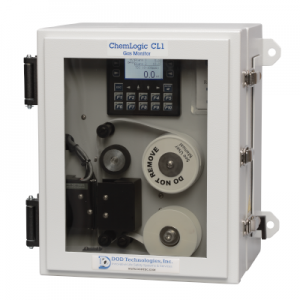There are several different kinds of manufacturing or industrial environments where excess carbon dioxide can be a hazard. In fact, its presence is often necessary for the beverage industry as well as wastewater treatment. While CO2 at low levels is common (and is in our atmosphere every day), excess levels of CO2 can result in injury or even death. Fortunately, there are CO2 gas monitors that are designed to protect employees by alerting them to the presence of CO2 in the air around them. They come into two primary variations: fixed and portable. Here are some things you should know so you can determine which type of monitor is best for your workspace.

Fixed CO2 Gas Detection Systems
Fixed monitors (also known as wall mount CO2 detectors) are ideal for spaces where there is stored carbon dioxide. Industrial facilities, restaurants where CO2 tanks are stored, cultivation industries, and safety industries can all have locations where CO2 is concentrated and where hazardous leaks can occur. As the name implies, fixed monitors are stationary and usually mounted nearby the stored CO2. When working the way it’s designed, the fixed monitor will be outfitted with visual and auditory alarms and can link to third-party systems such as a fire panel. When activated, the entire facility is alerted so that safety and evacuation procedures can be executed immediately, protecting both the employees and the building.
Portable Detectors
Portable monitors (also known as handheld CO2 detectors) are lightweight pieces of equipment that can be easily carried by any employee who might be venturing into a sensitive area. Portable Monitors must be located within 10 inches of the employees breathing zone, meaning their nose and mouth. As with the fixed detectors, they are linked to outside sources. They can record all the relevant information about the person wearing the device, including the concentration of CO2 and other gases, the location of the employee, and (depending on the model) can even act as a means of communication between several individuals, much like a cell phone. Because CO2 is heavier than air, it’s important that the monitor remain at belt-height in order to detect CO2 before it becomes a threat.
Which Is Best?
Whether your business should use a fixed or portable monitoring system depends on the application. Restaurants, for instance, may have only one area where CO2 is a threat. Syrup pumps that mix CO2, water, and syrup need to be properly vented to a building’s exterior. If the venting isn’t adequate and a leak develops, CO2 levels can escalate quickly, putting everyone at risk. A fixed monitor would provide the necessary warning before things get out of hand. If you work in an environment where CO2 is utilized throughout such as at a gas production or distribution facility, then the threat of a leak could occur anywhere and at any time, so a portable gas detection system would be necessary. In many cases, of course, both systems may provide the best protection.
If you want to protect your business with superior gas detection, contact the experts at DOD Technologies, Inc. We’ve been a leading provider of portable and fixed CO2 and four gas monitors for almost 20 years and have a gas detection solution tailored to your company’s needs. Call us today at (815) 680-6086.







